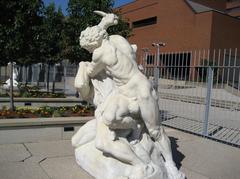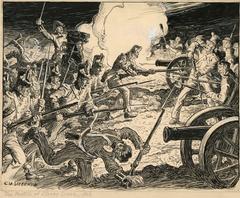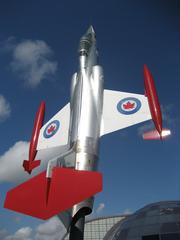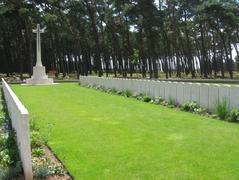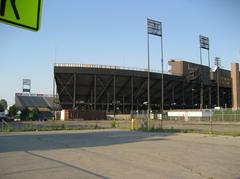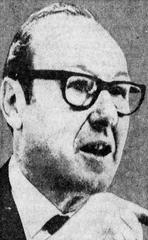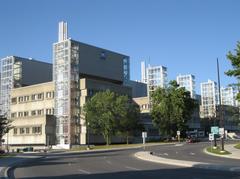Gore Park Hamilton: Visiting Hours, Tickets, and Historical Sites Guide
Date: 04/07/2025
Introduction
Gore Park, located in the vibrant heart of downtown Hamilton, Ontario, is a historic urban green space that has profoundly shaped the city’s civic, social, and cultural life for over two centuries. Named for the “gore” or wedge-shaped land it occupies, its story begins with early 19th-century land grants and the vision of George Hamilton, the city’s founder. Today, Gore Park is a dynamic hub, celebrated for its historical monuments, lush gardens, engaging public art, and lively community events.
This comprehensive guide covers everything you need to know for an enriching visit: historical context, visiting hours, accessibility, key attractions, surrounding heritage architecture, and practical visitor tips. Whether you are a history enthusiast, a local resident, or a traveler, Gore Park is a must-see destination that embodies Hamilton’s evolving identity and enduring community spirit.
For additional resources and planning, consult the City of Hamilton Gore Park Project and the Hamilton Public Library’s detailed history.
Table of Contents
- Introduction
- Historical Overview
- Park Layout and Green Spaces
- Visiting Hours, Accessibility, and Admission
- Facilities and Amenities
- Events, Tours, and Community Life
- Surrounding Architecture and Heritage
- Safety and Visitor Tips
- Nearby Attractions and Dining
- Frequently Asked Questions (FAQ)
- Conclusion
- References
Historical Overview
Early Land Grants and Park Origins
The roots of Gore Park trace back to an 1801 Crown land grant to John Askin Sr. (Hamilton Public Library). Passing through several owners, the property was acquired by George Hamilton in 1816 (Wikipedia). The park’s distinctive triangular “gore” shape resulted from its awkward fit within the city’s original grid plan. Initially neglected and used as a dumping ground, the site was eventually recognized for its potential as a central public space.
Park Establishment and Monuments
The transformation began in 1860 with the installation of a decorative cast-iron fountain commemorating Prince Edward Albert’s royal tour. By 1873, the land was officially landscaped as a city park, quickly becoming a gathering spot for civic celebrations and community events.
Several historic monuments punctuate the park:
- Central Fountain: Erected in 1860, dismantled in 1959, and replaced with a replica in 1996 for Hamilton’s Sesquicentennial (Hamilton Stories).
- Queen Victoria Memorial: Installed in 1908, symbolizing Hamilton’s colonial ties.
- Hamilton Cenotaph: Unveiled in 1923, this war memorial honors the city’s veterans and remains a focus for Remembrance Day ceremonies.
- Sir John A. Macdonald Statue: First erected in 1893, removed in 2021 amid reevaluation of colonial legacies.
Gore Park’s evolution reflects Hamilton’s civic growth, highlighted by urban renewal projects like the Gore Pedestrianization Initiative (City of Hamilton).
Park Layout and Green Spaces
Gore Park’s iconic triangular shape is defined by broad, tree-lined walkways, manicured lawns, and vibrant flowerbeds (ACO Ontario). Mature trees, some over a century old, provide shade and continuity with Hamilton’s past. The central fountain acts as a focal point, surrounded by benches and open lawns ideal for relaxation and informal gatherings. Seasonal plantings ensure year-round beauty, while the open design encourages passive and active use.
Visiting Hours, Accessibility, and Admission
- Visiting Hours: Daily from 6:00 AM to 11:00 PM.
- Admission: Free entry for all visitors; tickets are not required. Some special events may require registration or tickets.
- Accessibility: Wide, paved pathways and curb cuts ensure wheelchair and stroller access (City of Hamilton Accessibility). Entrances comply with AODA standards. Public washrooms are available in adjacent businesses and Jackson Square.
- Transportation: Easily accessible via multiple HSR bus routes (Hamilton Transit Info), bicycle lanes, and on foot. Parking is available in nearby lots and on surrounding streets.
Facilities and Amenities
- Seating: Ample benches and shaded seating throughout the park.
- Gardens: Seasonal floral displays and mature trees.
- Monuments: Queen Victoria Memorial, Hamilton Cenotaph, and historical plaques.
- Public Art: Rotating installations and permanent sculptures.
- Lighting: Well-lit pathways for evening visits.
- Nearby Amenities: Public restrooms, nearby cafés, and restaurants.
Events, Tours, and Community Life
Gore Park is the site of numerous community events and gatherings:
- Annual Festivals: Summer music series, food festivals, and holiday celebrations (Wanderlog).
- Gore Park Promenade: Weekly live performances in summer (GoodCaring.ca).
- Special Events: Remembrance Day ceremonies, Canada Day, art markets, and public demonstrations.
- Guided Tours: Offered seasonally, covering the park’s history and public art (Tourism Hamilton).
- Photography: The fountain, monuments, and Victorian-era street wall are favorite spots for photos.
Check the City of Hamilton Events Calendar for up-to-date schedules.
Surrounding Architecture and Heritage
The park’s significance is enhanced by the historic buildings that once surrounded it, such as the Victorian-era façades at 24 and 28 King Street East (National Trust for Canada). While some pre-Confederation buildings were lost in 2024 due to neglect (The Public Record), heritage advocacy continues to play a vital role in preserving what remains and guiding future revitalization efforts.
Safety and Visitor Tips
- Safety: Regular patrols by city staff and police, well-lit in the evenings.
- Pets: Allowed on-leash; owners must clean up after pets.
- Cleanliness: Waste and recycling bins are provided.
- Best Times to Visit: Late mornings and afternoons for events; early mornings for tranquility; evenings for a peaceful stroll.
Nearby Attractions and Dining
Within walking distance:
- Art Gallery of Hamilton: Canada’s oldest public art gallery.
- Hamilton Farmers’ Market: Local produce and artisanal goods.
- Jackson Square: Shopping and dining.
- James Street North Arts District: Galleries, boutiques, and street art.
- FirstOntario Centre: Sports and entertainment venue.
Nearby restaurants and cafés offer diverse cuisine and patio dining with park views.
Frequently Asked Questions (FAQ)
Q: What are Gore Park’s visiting hours?
A: Daily from 6:00 AM to 11:00 PM.
Q: Is admission free?
A: Yes, there is no charge to enter Gore Park.
Q: Is Gore Park wheelchair accessible?
A: Yes, paved pathways and accessible entrances ensure full access.
Q: Are pets allowed?
A: Yes, pets must be leashed and cleaned up after.
Q: Are guided tours available?
A: Yes, check Tourism Hamilton or local listings for tour options.
Q: Where can I park?
A: Multiple parking lots and metered street parking are nearby.
Conclusion
Gore Park is a living emblem of Hamilton’s past and present—a space where history, community, and natural beauty converge. Its engaging monuments, vibrant events, and accessible amenities make it a cornerstone of downtown life. Despite challenges such as the loss of historic architecture, the park continues to thrive as a welcoming and inclusive green space.
To make the most of your visit, consult city event calendars, explore nearby attractions, and consider joining a guided tour. Whether you’re seeking a peaceful oasis, a hub of cultural activity, or a window into Hamilton’s heritage, Gore Park offers an experience that connects the city’s storied past with its dynamic present.
Plan your visit today—download the Audiala app for updates, follow local social media for event news, and become part of Gore Park’s ongoing story.
References
- Hamilton Public Library – Gore Park History
- Wikipedia – Gore Park (Hamilton, Ontario)
- City of Hamilton Gore Park Project
- National Trust for Canada – 24 and 28 King Street East Gore
- The Public Record – City Knew About Structural Issues Before Gore Building Collapse
- Wanderlog – Gore Park
- Hamilton Transit Info
- City of Hamilton Accessibility
- City of Hamilton Events
Experience the heart of Hamilton at Gore Park—where history, culture, and community come alive.
